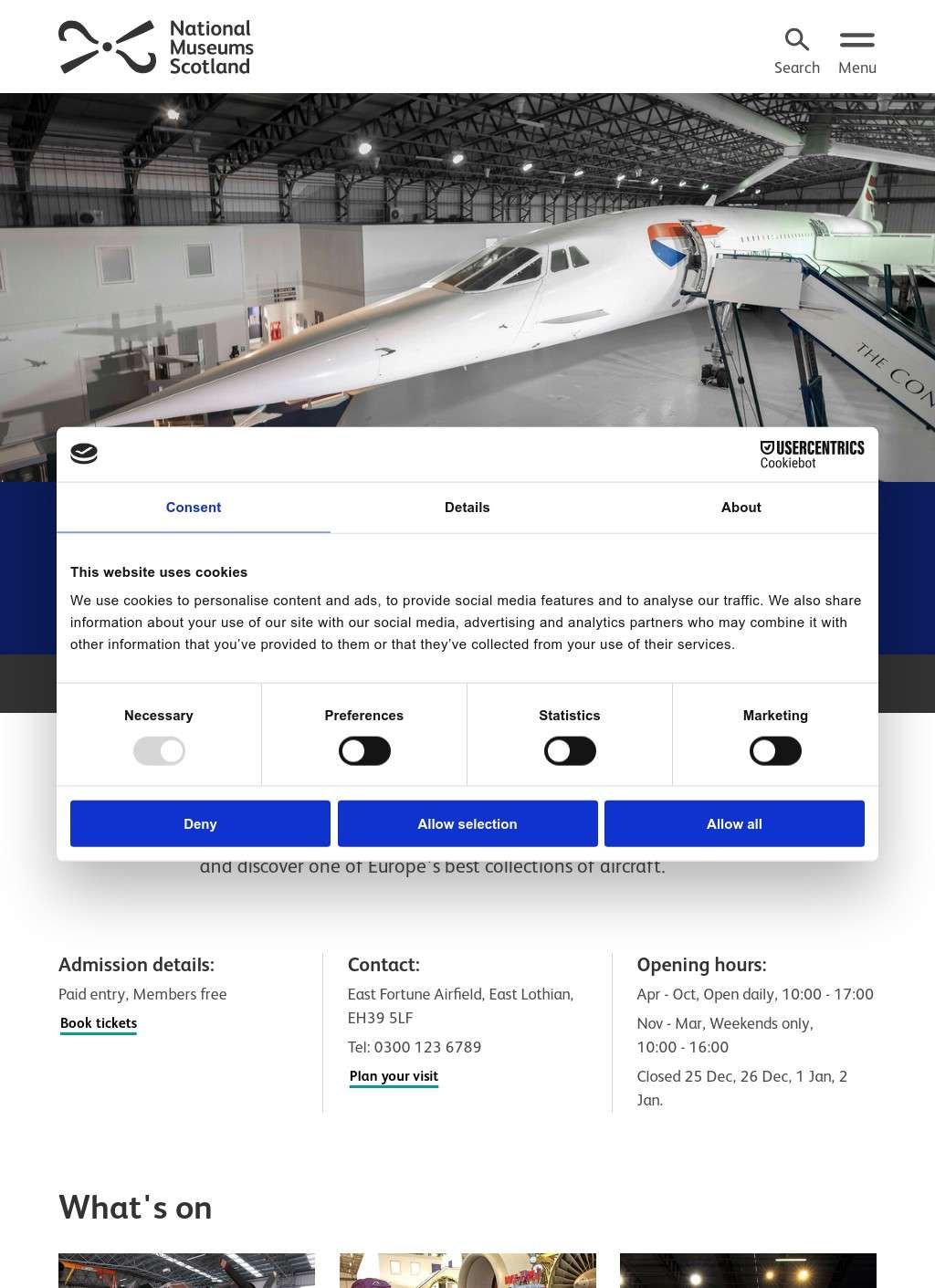The National Museum of Flight at East Fortune Airfield stands as Scotland's premier aviation heritage attraction and one of Europe's most significant aircraft collections. Located just south of East Fortune village in East Lothian, the museum occupies a remarkably well-preserved World War II airfield, with the entire site designated as a scheduled monument. This unique setting allows visitors to experience aviation history within authentic wartime buildings, including original hangars, control tower, and stores that tell the story not just of individual aircraft but of an entire operational airfield. As part of National Museums Scotland, the institution maintains the country's national collection of aviation artefacts, ranging from pioneering gliders to supersonic jets, making it an essential destination for aviation enthusiasts and families alike.
The museum's collection traces its origins to 1909 when the Royal Scottish Museum acquired Percy Pilcher's Hawk glider – the first aircraft collected by any UK museum. This pioneering acquisition established a tradition of preserving aviation heritage that continues today with over 50 aircraft on display. The collection's crown jewel is undoubtedly Concorde G-BOAA, which made an epic journey by land and sea from Heathrow to East Fortune in 2004. Housed in a specially constructed hangar with dramatic lighting, visitors can explore both the remarkably narrow passenger cabin and view the complex cockpit of the world's only successful supersonic airliner. The Concorde Experience includes comprehensive displays covering the aircraft's development, operation, and the unique culture of supersonic travel that captivated the world for three decades.
Beyond Concorde, the museum's hangars house diverse collections representing military, civil, and recreational aviation. The Military Aviation Hangar showcases combat aircraft from various conflicts, including a Supermarine Spitfire, Hawker Sea Hawk, and an Avro Vulcan bomber positioned dramatically outside. The Civil Aviation Hangar features classics like the de Havilland Comet – the world's first passenger jet – alongside a De Havilland Dragon and rare types like the Avro Anson. Visitors can walk through several aircraft including a BAC 1-11 and Boeing 707 forward fuselage, experiencing first-hand how air travel evolved from luxury to mass transportation. Recent additions include a Red Arrows Hawk jet, highlighting the museum's commitment to contemporary aviation history.
Interactive experiences elevate the museum beyond static displays, with the Fantastic Flight gallery offering over 25 hands-on exhibits exploring the principles of flight. Families particularly enjoy these interactive elements that make complex aerodynamic concepts accessible and entertaining. The Fortunes of War exhibition tells the human story of East Fortune Airfield, from its establishment as a Royal Naval Air Station in 1915 through its role in both World Wars, including the departure point for the R34 airship's historic first east-west transatlantic crossing in 1919. The restored Parachute Store demonstrates how these life-saving devices were maintained, whilst regular Conservation Hangar talks provide behind-the-scenes glimpses of ongoing restoration work on the collection.
The museum's significance extends beyond public display to active conservation and research. The Conservation Hangar houses aircraft awaiting restoration or in storage, including a Blackburn Buccaneer, McDonnell Douglas Phantom, and the Messerschmitt Me 163 Komet rocket fighter flown by legendary test pilot Captain Eric Brown. This working environment demonstrates the ongoing commitment to preserving aviation heritage for future generations. The museum remains the only UK national museum actively collecting commercial aviation history, recognising the importance of documenting how air travel transformed society. Recent conservation projects, including a £3.6 million upgrade installing heating and insulation in wartime hangars, ensure these historic structures can house precious artefacts whilst remaining authentic.
Educational programmes form a vital component of the museum's mission, with facilities designed to inspire young people about aviation, engineering, and history. School visits benefit from the authentic wartime setting and extensive collection, supporting curriculum topics from World War history to STEM subjects. The museum previously hosted Scotland's National Airshow, and whilst this major event is currently on hold, various special events throughout the year maintain community engagement. The site's role in significant historical moments – from pioneering transatlantic flights to serving as Edinburgh's temporary airport in 1961 – provides rich material for interpretation and learning programmes that connect past innovations with contemporary challenges.
As a major tourist attraction drawing over 100,000 visitors annually, the National Museum of Flight contributes significantly to East Lothian's economy whilst preserving irreplaceable heritage. The museum offers excellent visitor facilities including a café and shop, with the outdoor areas providing picnic spots and views across the historic airfield. Accessibility improvements ensure most areas remain available to visitors with mobility needs, demonstrating how heritage sites can adapt without compromising authenticity. Future plans include continued collection development, enhanced interpretation using digital technologies, and maintaining the delicate balance between preservation and public access. Through combining spectacular exhibits like Concorde with authentic historical settings and engaging interactive experiences, the National Museum of Flight succeeds in making aviation history accessible, educational, and inspiring for diverse audiences.
